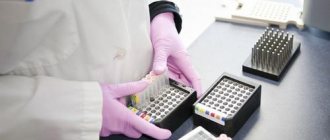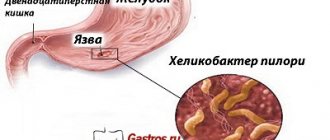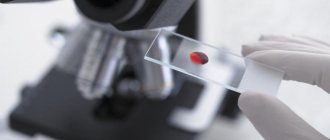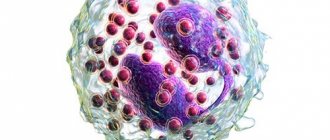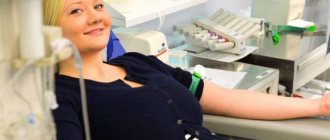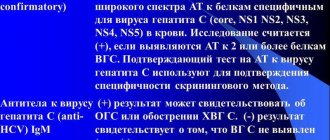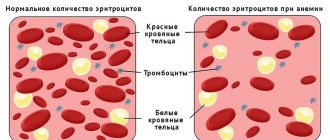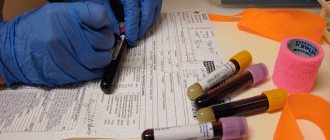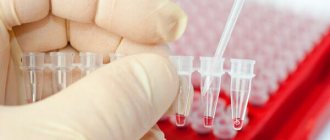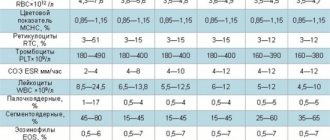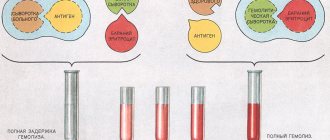What is HBsAg?
HBsAg is a special protein compound that is the surface shell of hepatitis B viral microorganisms. This medical term is also called “Australian antigen”. In most cases, the presence of the HBsAg protein coat is detected in the patient’s blood already 6 or 8 weeks after infection with the hepatitis B pathogen.
The determination of this antigen is carried out in a biochemical laboratory equipped with special medical equipment that allows microbiological and serological analyzes to be carried out. The patient's venous or capillary blood is used as a biological material.
The HBsAg antigen is the most objective and informational marker for the early diagnosis of hepatitis B virus infection. The detection of this protein, which is part of a pathogenic microorganism, makes it possible to control the epidemiological situation among large sections of the population and prevent the rapid spread of the disease through donor blood.
The detection of HBsAg indicates that a person has become infected with hepatitis B within the last 6 months , and the disease itself is at the stage of the incubation period, or occurs in an acute form.
The persistence of this antigen in the blood for more than six months from the moment of diagnosis indicates that the painful condition of the liver has become a chronic process.
Determination of anti-HBs antibodies
Anti-HBs appear in the blood by the end of 4-12 weeks after the introduction of the virus, but they can be detected in an enzyme-linked immunosorbent assay only after the disappearance of HBsAg. This period falls 6-12 months from the moment of infection. Titers of total immunoglobulins increase slowly, IgM disappears over time, and post-infectious IgG remains for life.
Normally, during the formation of an antigen-antibody complex, there is a “window” period (“serological gap”), lasting from a week to six months. Surface HBsAg disappears, but anti-HBs have not yet been produced. In such cases, false negative results are possible.
This is interesting: How is hepatitis B transmitted in everyday life?
In a vaccinated person, anti-HBs circulate in the serum as a result of the development of an effective immune response. Unlike post-infectious ones, their protective properties cease after 5-10 years.
Qualitative analysis
As a result of ELISA, an unambiguous answer is recorded: if anti-HBs and HBsAg are negative, there is no hepatitis B virus in the blood and there has been no previous contact with it. A positive result requires additional analysis to confirm or refute the result.
An unfavorable prognosis is observed when antibodies appear in the first weeks after infection. This is a hyperimmune reaction in response to the fulminant form of hepatitis B. The inflammatory-necrotic process in the parenchyma develops rapidly, which leads to death.
Quantitative Analysis
This is a more detailed definition of antigens and antibodies formed in the infectious, post-infectious or post-vaccination period. The amount of specific markers is expressed in mIU/ml. Normally, the concentration of IgM and IgG does not exceed 10 mIU/ml; there are no viral antigens in the blood.
During infection, due to the biochemical characteristics of the surface antigen subtypes, characteristic antibodies are produced for each of them. Quantitative analysis is prescribed for:
- establishing the effectiveness of vaccination;
- detection of primary HBV;
- control of antiviral treatment;
- diagnosis of mixed hepatitis;
- selection of individuals for re-immunization due to the disappearance of protective antibodies.
Why is the HBsAg test prescribed?
An HBsAg blood test is a modern method for diagnosing capillary and venous blood for the presence of signs of viral microorganisms that are causative agents of hepatitis B. The test for this antigen is carried out for the purpose of a comprehensive examination of the patient, or a preventive study of biological material.
Diagnostics for the presence of HBsAg in the blood is prescribed in the following cases:
- chronic diseases of the liver tissue or biliary tract, the nature of which was not determined based on the results of the initial examination;
- a preliminary blood test showed an excess of ALT and AST;
- the patient has external signs of infection with viral hepatitis, and the stated symptoms indicate the development of an acute form of liver disease;
- in a closed social group or among members of one family, an outbreak of the hepatitis B virus has been recorded (in this case, a test for HBsAg is prescribed to all people who have been in contact with infected people, since they are at high risk);
- there is a preventive need for periodic examination of people with chronic pathologies of other organs who require regular parenteral manipulations (patients with chronic renal or liver failure, hematological diseases);
- preparing the patient for surgery (the patient’s body is checked not only for HBsAg, but also for the possible presence of other infectious agents);
- microbiological examination of blood from patients who are invited as donors;
- prevention of morbidity among employees of healthcare institutions working with patients who are carriers of the HBsAg antigen;
- comprehensive diagnostics of people who are undergoing treatment or rehabilitation after intravenous drug use (a blood test is performed in the laboratory of a drug treatment clinic before hospitalization of patients of this category);
- initial examination of women who are pregnant, as well as their registration with an obstetrician-gynecologist, who will be involved in further monitoring of fetal development.
Symptoms of hepatitis B
Blood donation for HBsAg is prescribed for persons who are promiscuous, have intimate relationships with several sexual partners, and do not use barrier contraception.
Preparing for analysis
HBsAg blood test is a laboratory diagnostic method that requires the patient to perform a number of preparatory measures.
In order for the results of a blood test to be objective, the following rules must be observed:
- on the day of donating blood, do not have breakfast, but visit the biochemical laboratory on an empty stomach;
- To collect biological material, appear at a strictly specified time, since blood collection for this analysis is carried out only until 11-00;
- one day before the scheduled test, fatty foods should be completely excluded from the diet, the presence of which can create additional stress on the liver tissue;
- the last meal should take place no later than 8 hours before the scheduled time of blood collection;
- in the evening before the day of the scheduled study, you should not overeat (dinner should be light and lean);
- 3 days before the examination, it is necessary to completely eliminate the use of alcoholic beverages;
- in 15 minutes Before collecting biological material, you are allowed to drink 150-200 ml of drinking water without gases.
Due to the fact that venous blood is most often used for laboratory testing for HBsAg, and its donation is carried out on an empty stomach, you should take with you some cookies, chocolate, a sandwich or other snack foods. They can be consumed immediately after blood collection.
This will avoid dizziness caused by a slight decrease in blood pressure or blood glucose levels.
How is this study carried out?
HBsAg is detected by two types of tests: rapid tests and serological tests performed in the laboratory. A study such as the use of express strips has two advantages: you can do it yourself at home, you won’t need to wait long for an answer, because it will be ready in a matter of minutes. To activate the express strips you will need:
- prick your finger with a medical scarifier (after treating your finger with an antiseptic);
- Apply a drop of capillary biofluid to a section of the strip containing a special reagent.
This diagnostic method is qualitative, because it will be established, but it is impossible to determine the degree of its proliferation (i.e., the area of liver damage). Test strips for express diagnostics can be purchased at any pharmacy or pharmacy kiosk.
Laboratory methods are carried out only in a specialized clinic. This study is highly accurate and has greater specificity, i.e. it indicates not only qualitative characteristics (quality), but also determines quantitative indicators of harmful cells in the body.
But to perform such an analysis, the use of various reagents and special equipment will be required.
Today, in order to detect HBsAg in the laboratory, various methods are used: RIA and XRF, PCR and ELISA, etc. To perform these examinations, venous blood is required, namely plasma. This liquid component of a biological fluid is obtained by processing blood in a centrifuge and allowing it to settle in a calm state.
Carrying out blood testing
An HBsAg blood test is one of the methods for early detection of hepatitis B. Examination of the body can be carried out using rapid diagnostics or serological testing of venous blood, which is performed by qualified personnel in a biochemical laboratory.
Express diagnostics
The advantage of express diagnostics of hepatitis B is that this research method allows you to obtain results about the possible infection of the body with viral infections within a few minutes after the delivery of biological material. In this case, the patient’s capillary blood is used, which is collected from the ring finger bundle.
To obtain an objective result, you will need to apply 1-2 drops of biological material directly to the surface of the diagnostic immunochromatographic test strip. After this you should wait 10 to 15 minutes. This time is enough for the reagents contained in the medical test to confirm or deny the presence of HBsAg antigen.
If a person has hepatitis B and is a carrier of this type of viral infection, then 2 purple stripes will appear on the express test. This result indicates a positive reaction to HBsAg. In disease-free patients with clear blood without evidence of hepatitis B surface antigen, 1 line should appear in the control zone.
This is a negative test result. A complete lack of reaction on the express diagnostic test indicates that it is necessary to re-test the capillary blood.
For patients who have a positive examination result, a more in-depth study of venous blood is indicated. Express diagnostics are carried out in a laboratory that provides such services.
Also, this capillary blood test can be performed independently at home, but at the same time, observing the rules of sterility. You can purchase a rapid test to determine HBsAg antigen at a pharmacy.
This does not require the presentation of a special prescription from the attending physician. The average cost of test strips ranges from 740 to 800 rubles. depending on the manufacturer.
Serological laboratory diagnostics
An HBsAg blood test is a modern method for quickly diagnosing infection with the hepatitis B virus. To obtain more objective and reliable information about infection of the body with this disease, a serological test is used, which is carried out in a biochemical laboratory.
This type of diagnosis is performed as follows:
- Venous blood is collected from the patient's ulnar vein.
- The collected biological material is immediately transferred for research, or placed in a sterile storage cabinet at a temperature of +2 to +8 degrees Celsius.
- In the process of laboratory diagnostics, the protein structure of the surface antigen, which is characteristic of HBsAg, is identified.
- If signs of hepatitis B infection are detected, the examination result is considered positive.
The absence of HBsAg indicators indicates a negative diagnostic result. Patients whose venous blood contains traces of surface antigens are prescribed a repeat donation of biological material. This is necessary in order to definitively confirm the infectious invasion of the body, or to refute the fact of infection with hepatitis B.
Indications for testing
To date, there is not a single drug that could get rid of chronic hepatitis B, but early diagnosis helps to avoid catastrophic consequences for the body.
For this reason, preventive screening is recommended to be carried out at least once a year. The price is 300–400 rubles (depending on the region).
The cost of qualitative analysis in the popular Invitro laboratory is 370 rubles. The quantitative one is more expensive - 1,370 rubles, but it is passed only if the previous answer is positive.
For some people, HbsAg testing is mandatory.
This list includes:
- personnel of medical institutions, especially persons in contact with blood, surgical instruments, syringes;
- women during pregnancy, biomaterial is collected twice (in the first and last trimester, before delivery);
- surgical patients who are being prepared for surgery;
- persons donating blood;
- people who use drugs through intravenous injection or have sexual intercourse without a condom;
- patients suffering from chronic diseases of the liver and biliary tract or infected with other types of hepatitis;
- relatives living in the same room with the carrier of the virus, and his sexual partners.
If the mother had hepatitis B during pregnancy, the virus is transmitted to the child in 5–20%, so such babies need observation.
Also, testing for the Australian antigen is indicated for people who:
- a biochemical blood test showed an increase in the level of liver enzymes AST and ALT;
- symptoms of jaundice appeared, the digestive process was disrupted;
- there are muscle and joint pains of unknown etiology;
- body temperature increased to subfebrile levels.
It is recommended to take an immunoglobulin test before vaccination.
In 85% of cases, the introduction of modified viral particles forms stable lifelong immunity to infection, but in 15% of people this does not happen. They are vaccinated every 7–10 years with periodic monitoring of anti-HbsAg.
Testing during pregnancy
Women who are pregnant undergo a venous blood test for HBsAg levels before registering with an obstetrician-gynecologist. Carrying out this study is necessary for the timely diagnosis of hepatitis B, as well as the initiation of intensive treatment immediately after the birth of the child.
A blood test for HBsAg can be performed using a rapid diagnostic test or using a serological method. The study of biological material is carried out under sterile conditions in a biochemical laboratory.
In state-owned healthcare institutions, a blood test for HBsAg is carried out free of charge. In private clinics, the average cost of venous blood testing ranges from 730 to 950 rubles. depending on the pricing policy of the medical center management.
A repeat blood test for hepatitis B surface antigen is taken in the 3rd trimester of pregnancy. The woman’s body is also checked for the possible presence of other viral and bacterial infections.
Methods for determining HBsAg
Blood is taken for HBs antigen to determine the presence of the virus in a person. There are basic diagnostic methods:
- express test;
- serological analysis.
The first type is a qualitative analysis technique. Here you can find out about the presence of an antigen in the blood. A similar procedure can be carried out at home. Pharmacies sell a special test for hepatitis B, which every citizen can purchase. The virus can be detected in human blood by this method after two days from the moment of infection. The procedure for conducting a rapid test:
- Wipe your finger with alcohol.
- Make a puncture with a scarifier.
- Apply 3 drops of blood to the strip and add the same number of drops of the special solution from the kit.
- The result will be ready within 15 minutes.
This is interesting: Liver fibroscanning: what it is, how it is done and deciphering the indicators
The detection of an antigen in the blood obliges the patient to urgently visit a doctor and undergo more accurate studies:
- radioimmunoassay;
- enzyme immunoassay (ELISA for hepatitis B);
- immunofluorescence technique.
Before a blood test for hepatitis B, it is prohibited to eat or take antibiotics for 12 hours. You need to take the test in the morning. Neglecting these tips allows for false results.
How long does it take to test?
The duration of a laboratory blood test for HBsAg antigen depends on what type of diagnosis was used in a particular clinical case. If a laboratory analysis method was used, then the results of the examination are known after 1-2 days, depending on the material and technical base of the institution that carried out the isolation of the surface antigen from the venous blood.
You can pick up the diagnostic results yourself by visiting the clinic in person, or you can receive a ready-made conclusion to your email address. In state-owned medical institutions where there is no modern equipment, the analysis time can take up to 7 days.
Testing capillary blood using disposable rapid testing strips takes no more than 10-15 minutes. After the specified period of time, a person already knows about the presence or absence of HBsAg surface antigens in his body, which are a marker of infection with the hepatitis B virus.
The main advantage of this diagnostic method is its speed , but there is a large error in its information content. When receiving a positive or negative test result, doctors recommend that patients undergo additional examination by donating venous blood in a biochemical laboratory.
How to take a blood test for HBsAg
To get tested, you need to go to the nearest clinic. Before the procedure, you must comply with the preparatory requirement, namely, do not eat 4 hours before the analysis, do not take any medications for 2 weeks, do not drink alcoholic beverages, and refrain from physical activity. As for the procedure itself, it involves the following steps:
- The patient's forearm is tightened using a special tourniquet.
- A needle is inserted into a vein located in the bend of the elbow.
- The blood is released into a test tube.
Patients usually receive test results within a couple of days. Its form may contain different indicators, it depends on the type of diagnosis.
Decoding indicators
The results of tests for HBsAg indicators should be deciphered by the attending physician who ordered this blood test.
Patients who have undergone a body examination for hepatitis B virus infection receive a laboratory report with a positive or negative result.
Negative result
The official unit of measurement for hepatitis B virus surface antigens is the international unit per ml of capillary or venous blood (IU/ml). If the laboratory report of the analysis of the patient’s biological material indicates that HBsAg is completely absent, or their quantitative index does not exceed the level of 0.05 IU/ml, then the result is considered negative.
For people who have not previously been diagnosed with hepatitis B virus infection, such a conclusion indicates that their body is completely healthy and that infectious invasion by a pathogenic microorganism has not previously occurred.
Patients who were already infected with hepatitis B, underwent a long course of drug therapy, took a venous blood test and received a similar result, can count on remission. HBsAg levels below 0.05 IU/ml indicate the completion of the acute stage of the disease with the beginning of the recovery stage of the body.
If you receive such results, it is recommended to undergo a re-examination by donating venous blood after 7-10 days. This is a control laboratory test that will confirm the cleansing of hepatitis B virions from the blood and liver tissue, and not the transition of the disease to a latent form.
Positive result
The result of a blood test for HBsAg is considered positive if, based on the results of a laboratory test, more than 0.05 IU per 1 ml of blood was detected.
If the examination was carried out independently using a rapid test, then this is a reason to contact an infectious disease specialist or hepatologist. It will be necessary to undergo an additional examination, during which a comparative analysis is carried out with the results of the primary study.
In most cases, the presence of elevated levels of HBsAg indicates infection with the hepatitis B virus with the course of the disease in acute or chronic form.
After confirming the diagnosis using a control venous blood test, the patient is prescribed an individual treatment regimen that will suppress the pathogenic activity of viral microorganisms, as well as maintain the functionality of the liver tissue.
The patient is registered with an infectious disease specialist at his place of permanent residence, where he is required to undergo further treatment.
Reasons for a false positive result
In medical practice, there are periodically cases when a rapid test for surface antigen shows a positive result, and a control study of venous blood in a laboratory refutes the primary data. There are a large number of factors, the influence of which can lead to the receipt of distorted information.
The following are the most common causes of a false positive result for HBsAg:
- alcohol abuse, which continued over a long period of time, until the scheduled date of blood donation;
Alcohol may cause a false positive HBsAg blood test result. - autoimmune reaction of the body;
- increased physical activity and fatigue, which persisted at the time of delivery of biological material;
- non-compliance with the rules for preparing for the HBsAg test;
- consumption of food that contained large amounts of fats of animal and plant origin;
- the presence of concomitant liver diseases that impair the functionality of its tissues, but do not have a viral etiology;
- taking medications, the side effect of which is a decrease in liver performance.
A false-positive result for the surface antigen of the hepatitis B virus requires mandatory verification by conducting a repeat test. After the absence of the disease is confirmed, a control test is taken again, but after 6 months. The object of study is venous blood. The rapid test is not used due to the large error of the results.
What is Australian antigen
The hepatitis B virus has a specific set of protein components that are located in different parts of it. They are called antigens. That part of the antigens that are located on the surface of each viral particle is called the surface or HBsAg antigen. We can say that it acts as a kind of calling card of this pathogen. Only its detection by immune cells causes the first cascade of immune reactions aimed at neutralizing the virus.
It turns out that when the hepatitis B virus enters the blood and enters the liver, it begins its active reproduction with the participation of the DNA of liver cells. At this time, it is impossible to detect the Australian antigen, since its concentration is very low. The isolated new viral particles are released into the blood, which leads to an increase in the amount of HBs Ag, which can already be detected using some serological diagnostic methods. After some time, corresponding specific antibodies are produced against these antigenic structures foreign to the body. They are called anti-HBs antibodies. Determination of the specific type of these immunoglobulins (class M or G), as well as their titer in the blood, is used in the diagnosis of hepatitis B in different phases of its course.
What to do if viruses are detected in the blood?
Patients who have been found to have high titers of HBsAg surface antigen should seek medical attention from an infectious disease specialist or hepatologist as soon as possible. If there are no doctors of this specialization at the place of residence of the sick person, then you should visit a therapist.
A general practitioner will examine the patient and write a referral to a specialized institution whose employees are involved in the diagnosis and treatment of diseases of this category. In the absence of acute form of hepatitis B, the patient can receive outpatient treatment. Patients with severe symptoms are hospitalized in the hospital.
Patients with acute hepatitis B do not require drug treatment with potent drugs. The basis of therapy is drugs that improve the patient’s overall well-being.
The table below lists the categories of medications that are prescribed for acute hepatitis B:
| Drug categories | Purpose of medications |
| Antipyretics | They are used for patients with hepatitis B to reduce high body temperature, eliminate chills and fever. |
| Replenishing water-salt balance | Medicines in this group are used to prevent dehydration caused by prolonged diarrhea and vomiting. |
| Sorbents | Sorbent preparations can reduce the intoxication effect caused by a temporary decrease in liver function. |
| Vitamins and minerals | Regular intake of vitamins and minerals improves the protective functions of the immune system, increasing the body's resistance to the hepatitis B virus. |
The type of medications, dosage regimen and timing of treatment are determined by an infectious disease specialist on an individual basis, depending on the symptoms of the disease and the functional state of the liver. Chronic hepatitis B is treated with the antiviral drugs Tenofovir or Entecavir.
These are medications that suppress the pathogenic activity of pathogens, preventing their harmful effects on liver tissue. These medications are taken 1 tablet per day. The duration of treatment is not limited by time and is set by the doctor.
A blood test for HBsAg indicators is carried out for early diagnosis of infection of the body with the hepatitis B virus. This is an informative method for studying capillary and venous blood, which is performed using individual rapid tests or a serological examination method in the sterile conditions of a biochemical laboratory.
A positive result indicates that the body is infected with the hepatitis B virus. A negative test result indicates the complete absence of infection. Minimum HBsAg titers may indicate the transition of the disease to a chronic form.

